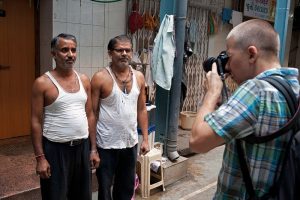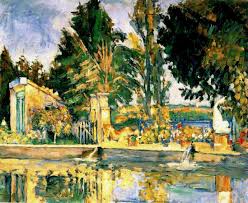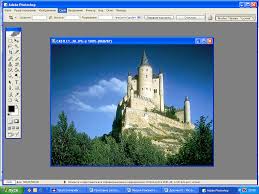MATSEY DAKOVICH – TALENTED STREET-PHOTOGRAPHER AND TRAVELER-DOCUMENTIST
 I am not a street photographer. I’m just a photographer who sometimes manages to take a good photo on the street
I am not a street photographer. I’m just a photographer who sometimes manages to take a good photo on the street
M. Dakovich
Maciej Dakowicz (© Maciej Dakowicz) is a documentary photographer and a master of the truly “street” genre. The Pole, who moved to live in the UK, but did not stay long anywhere, became famous for the provocative and even scandalous series of works by Cardiff after Dark, which he shot in 2009. Photographs published in 2012 as a separate book are an impassive reportage from the streets of English Cardiff, where after sunset young residents of the city have fun in bars and pubs, sometimes completely “losing face”. Alcoholic chronicles of the British fun almost shook the foundations of the Crown and sparked a heated public discussion. In many respects, this is the merit of the author of the pictures – witty, ruthlessly noticing details with his sharp eye, able to build the composition so that the viewer grasps the point at one point.
Maciej perfects his natural talent by traveling around the world. Now, for example, his “place of deployment” is Bangkok, where he teaches photography to Asian students. He has to constantly update his passport – pages for visa stamps end so quickly. The main interests of Maciej are street photos on acutely social topics, ethnographic sketches and documentaries. Dakovich often happens in the countries of Southeast Asia, the Middle East, and also enjoys participating in professional and educational British projects. He is one of the founders of the Cardiff gallery Third Floor Gallery, and as a teacher of photography, he often holds seminars and master classes.
Dakovich’s work did not leave indifferent even the UN – Maciej collaborates with the organization as a documentary, works for her on the streets of cities around the world. He is now an official Fujifilm X-Photographer photographer. Maciej is also one of the members of The Wideangle agency and the In-Public international photo community of street reporting. He is a frequent guest of festivals, takes part in international competitions. Maciej Dakovic won the Leica Street Photo, NPPA Best of Photojournalism, Grand Press Photo and won more than 20 awards. However, he did not study photography on purpose, but entered the profession at the call of his heart.
Doctor of Computer Science with a camera and a backpack
Maciej Dakovich was born in the Polish city of Bialystok on November 20, 1976. He will leave the northeast of the country where he spent his childhood, for the sake of entering the University of South Wales. As a child, Maciej studied computer science, and went to Cardiff to earn a doctorate in computer science. After defending his Ph.D. thesis in 2010, he realized that not much connects him with information technology, and has dramatically changed his life.
After training, Maciej traveled to Hong Kong to work at the university as a research engineer and programmer. There he bought his first camera and soon left science forever for the sake of a photo career. Maciej Dakovic became not an armchair scientist and techie, but an active traveler, spending most of his time on the road. In search of new scenes, he does not get tired of exploring new countries, constantly comes up with art projects and has already collected a collection of almost 6,000 wonderful pictures.
In 2010, Dakovich and several of his fellow photographers founded a gallery specializing in the street genre. Constantly working in the chosen direction, already in 2012 Maciej left Cardiff, where he lived for eight years, and left for London. He did not stay there, and, already a famous street author, he moved to the largest Indian city of Mumbai. From there, the photographer traveled to Tunisia, Bangladesh, Yemen and a huge number of other countries, continuously photographing real life in its entirety. Most of Dakovich’s works are related to his interests – road and street photos, social documentaries.
Secrets of Mastery
The mastery of the author is recognized by colleagues. Photos of Dakovich are constantly published in the press, shown at exhibitions of his work, where amusing scenes on the streets of exotic cities are combined with dramatic photos.
The photographer amazingly accurately conveys the authenticity of different cultural environments and the “splendor and poverty” of society. The works of Maciej Dakovic are presented in several street photo almanacs – “Street Photography Today” from Thames & Hudson, Magenta Flash Forward 2009, “World Atlas of Street Photography” and so on. He published one personal book – the very Cardiff after Dark, with pictures printed in all British tabloids.
In the preface to the monograph, Sean O’Hagan spoke outrageous about the frankness and defended the author of the pictures, who was accused of excessive admiration for the social problem of youth alcoholism in England. Dakovich does not enjoy demonstrating vulgarity and licentiousness, but balances the grotesque and the spirit of street unbridled fun with dramatic, coolly distant lighting and thoughtful staging. At the same time, he has enough sense of humor in order to show the audience ridiculous details that are not so noticeable in life.




